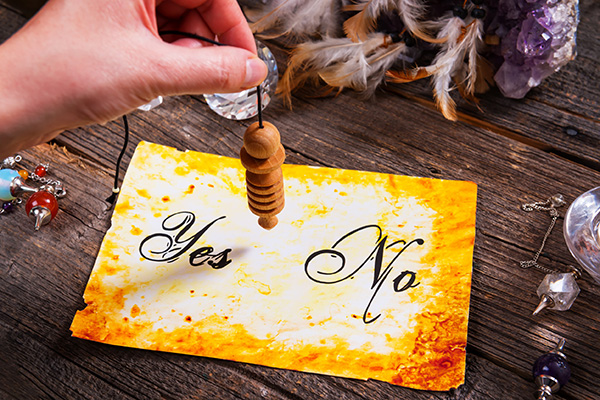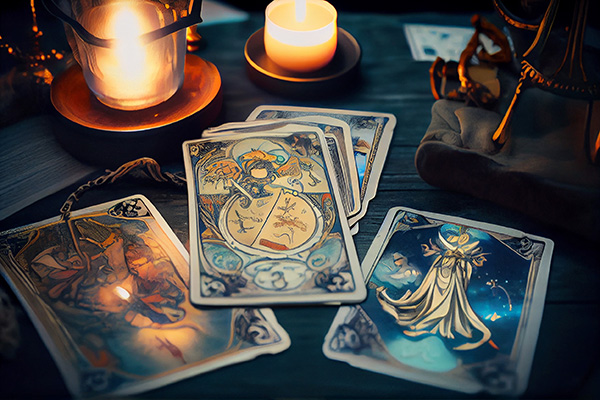Delving into the Idea of Accepting Your Inner Shadow
 When I initially embarked on a deliberate and conscious spiritual journey, I recall feeling a profound sense of alignment with this path. Every stride I took towards ‘enlightenment’ during this incarnation appeared to illuminate my life further, showering me with countless blessings.
When I initially embarked on a deliberate and conscious spiritual journey, I recall feeling a profound sense of alignment with this path. Every stride I took towards ‘enlightenment’ during this incarnation appeared to illuminate my life further, showering me with countless blessings.
In those early times, I was truly on a roll! I envisioned this to be a seamless journey – filled with nothing but joy, light, and love. It was indeed marvelous.
What took me by surprise, however, was the unavoidable surfacing of my shadow due to all my spiritual endeavors. This was not a comfortable realization – coming to terms with the darkness residing within me, those neglected aspects of myself, the disowned fragments of my soul that had been left in anguish.
Through a series of what seemed like unfortunate incidents, I was presented with chances to confront my shadow self. Difficulties in my relationships with friends and loved ones became evident. Initially, I couldn’t grasp the situation and felt isolated and misunderstood. I shifted the blame onto those around me, avoiding looking inward.
Turning inward towards the light felt acceptable, yet facing the darkness was daunting. My ego constructed barriers to prevent me from venturing there. Ultimately, I could evade it no longer.
At this juncture, my life had undergone significant change within just a few years – so much so that the entire framework of my existence and the individuals within it had transformed. While numerous changes were beneficial, the stark differences between my ‘old life’ and ‘new life’ compelled me into deep self-examination.
Engaging with your shadow can foster greater authenticity, creativity, energy, and personal awakening. This reflective process is crucial for achieving mature adulthood (a rarity, as most might believe) ~ Scott Jeffrey
Where did I want my life to lead? What pursuits did I want to undertake? And who was I destined to become? I must confess, these were weighty inquiries, and I certainly felt their burden. Moreover, I was in the process of healing from a personal loss, which was taking longer than I had hoped.
The turning point for me occurred while lamenting one day about my relationship with my partner. I recognized that I yearned for a deeper connection, yet sensed he was reluctant to meet me at that level.
Now, I believe that people often serve as mirrors for us. Once I acknowledged that mirror with him, I had to confront the reality that I was the one facing connection issues. Whether or not my partner struggled with connection suddenly became irrelevant. I realized I was the one dealing with the issue, and I recognized its manifestation throughout all my past relationships.
Suddenly, I comprehended why the call for shadow work had been persistently haunting me. If I ever hoped to manifest the life I was intent on creating, I needed to delve far deeper than I had before.
What I uncovered was the extent to which my limiting beliefs were rooted in experiences from my childhood. These roots had become so entwined within me that I had nearly forgotten about them. Consciously, I didn’t realize I had accepted these beliefs as my truths, or that I had buried them so deep that I wouldn’t have to confront those harsh ‘truths.’
I quickly recognized a profound sense of unworthiness regarding love. I feared receiving authentic connections because I was anxious about losing them – or what price I would have to pay for them. In this mindset, I constructed defenses that allowed me to be affectionate, show care, and express my love, but I would permit myself to accept love only to a certain degree and no further. I was, in essence, denying the very connection I sought so fervently!
Since (the shadow) is concealed, it can infiltrate our lives, beliefs, and daily behaviors in unforeseen manners – sometimes even manifesting as protective defensive mechanisms designed to shield us from embracing our full, unrestrained power – hidden from the world or potential scrutiny ~ Shahida Arabi
With this change in my viewpoint, I began making more conscious choices in my interactions with others. Instead of always claiming to be ‘fine’ when asked how I was, I opted for honesty. Perhaps I was ‘okay,’ but maybe I was having an exceptionally tough day. Regardless, I chose to be truthful about it.
Instead of feeling obligated to be strong for others and then isolating myself when I needed support, I started to embrace my reality and express it. To my surprise, I began to discern who genuinely cared for my well-being and who was indifferent.
Allowing my Spirit to remain in a state of receptivity rather than projection necessitated that I became genuinely vulnerable in my relationships. A part of this journey involved uncovering my insecurities, defense mechanisms, limiting beliefs, and past traumas, which had an undeniable impact on my identity. Accepting these facets of myself has not been an effortless process, and remains a work in progress. There will always be more shadow work to undertake.
What I also learned during this initial encounter with shadow work is that ‘the shadow’ exists to be embraced. The more of our shadow we can harmonize, cherish unconditionally, and love, the more of ourselves we can actualize and rise above. This happens as we come to know ourselves more comprehensively and profoundly, without hiding parts we feel shame about. Instead, they’re now embraced as integral to our being. Not begrudgingly, not in spite of, but because we embrace them!
I would not be the person I am today without these ‘shadow aspects’ of myself – and I am genuinely grateful to embody who I am. All these previously ‘unwelcome’ pieces of me contribute to my ‘I Am,’ my essence.
Thus, I now recognize the importance of befriending our internal darkness and the pain it harbors. Do not attempt to chase it away or disregard it. Such actions will only extend the suffering it inflicts upon you. Instead, sit with it. Engage with it. Understand it – and accept it as it exists.
When the shadow emerges, you acknowledge the feeling, you sit with it, and you offer it love and solace. As you engage with and integrate these parts of yourself, they will eventually cease to surface altogether ~ Sarah Regan
In this journey of acceptance – genuine and sincere acceptance – you are simply permitting your feelings to exist within you, without resistance or attempts to alter them. By shining the light of your awareness upon them with love and gentleness, you can integrate your experiences. As you do this, you will find that these aspects cease to clamor for your attention.
Throughout life, some of our most profound lessons arise from examining the sides of ourselves we keep hidden. Because when we bring our shadow into view, heal, and integrate those lessons into our lives, we evolve immensely.
In time, you may uncover further awareness of other limiting beliefs you possess, providing you the chance to transmute those as well. It is an ongoing process of revealing the authentic self.
Although engaging in shadow work might seem daunting and frightening, when you feel called to pursue this journey for yourself, I urge you to remember that it is, in fact, an exhilarating adventure ahead! The transformative power of shadow work reaches into various facets of your life. It becomes the journey back to a once-forgotten or denied self, and it is truly liberating.
|
Sarah is a natural Clairvoyant, Clairaudient and Empath whose practice has been built largely by word-of-mouth. As a child her abilities came to the fore through precognitive dreams and messages she received. Her connection with Spirit was never more personal than the visit she received from her mother who passed, in which she conveyed the moving message that she loved her. Not long after her death she discovered her mom’s Tarot deck, which launched Sarah on her journey and life-calling to explore a vast array of her gifts, one of them Eye-Gazing, a psychic tool she developed herself! Sarah continues to receive steady guidance and messages directly from Spirit Guides and Angels, and has maintained a steady and successful private practice in Canada, since 1995. Very active in her spiritual community, she’s often called upon to lead local events, including group meditations. The practice of meditation, she confides, has changed her life in profound ways. Sarah has developed The Sacred Art of Creation, leading empowered women’s circles that facilitate self-healing, manifestation and alignment with one’s higher self. If you’d like a reading with a compassionate reader who can both hear and convey direct messages from Spirit Guides and Angels, you can find Sarah at PsychicAccess.com. |
Acknowledging your inner shadow is a notion that has become increasingly recognized in recent years as individuals strive to comprehend and embrace all facets of themselves. The concept of the shadow self was initially proposed by Swiss psychiatrist Carl Jung, who suggested that everyone possesses a darker side to their character that is often suppressed or ignored.
The shadow self embodies the aspects of ourselves that we consider unacceptable or undesirable. These might include traits such as anger, jealousy, greed, or selfishness. By recognizing and accepting these elements of ourselves, we can attain a deeper comprehension of our identities and work towards harmonizing them into our overall self-image.
Delving into your inner shadow can be a demanding and disconcerting experience, as it necessitates addressing parts of yourself that you might have been evading or suppressing. However, by facing these elements, you can undergo personal growth and transformation. Embracing your shadow self allows you the opportunity to fully accept and love yourself, imperfections and all.
One effective method to investigate your inner shadow is through self-reflection and introspection. Allocate time to analyze your thoughts, emotions, and behaviors while pinpointing any patterns or tendencies connected to your shadow self. Tools such as journaling, therapy, and meditation can also prove beneficial during this journey.
It is essential to recognize that embracing your inner shadow does not equate to succumbing to negative or harmful behaviors. Rather, it involves acknowledging and accepting all components of yourself, both light and shadow. By integrating your shadow self into your overall identity, you can achieve a heightened sense of completeness and authenticity.
To summarize, the exploration of embracing your inner shadow can be a profoundly transformative expedition. By confronting and accepting the darker sides of your nature, you can attain a richer understanding of your identity and promote personal growth. Embracing your shadow self can lead to enhanced self-acceptance, self-love, and overall well-being. Continue reading

















